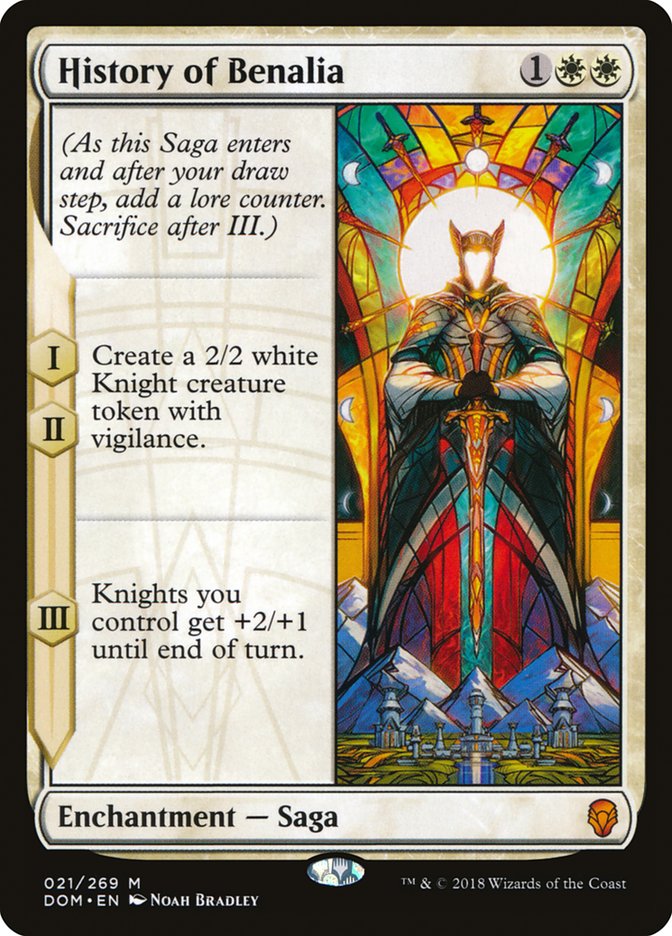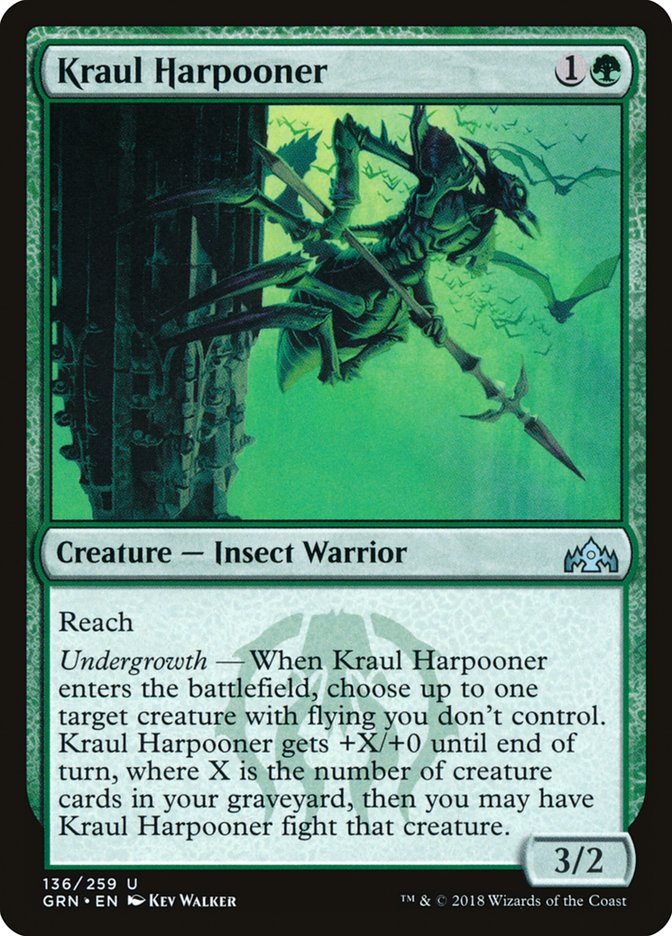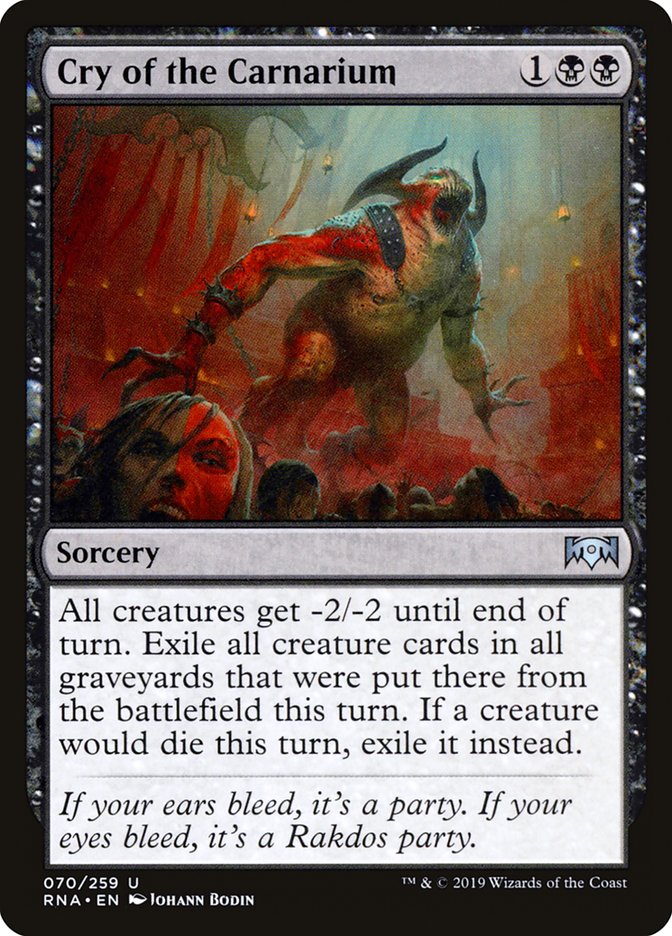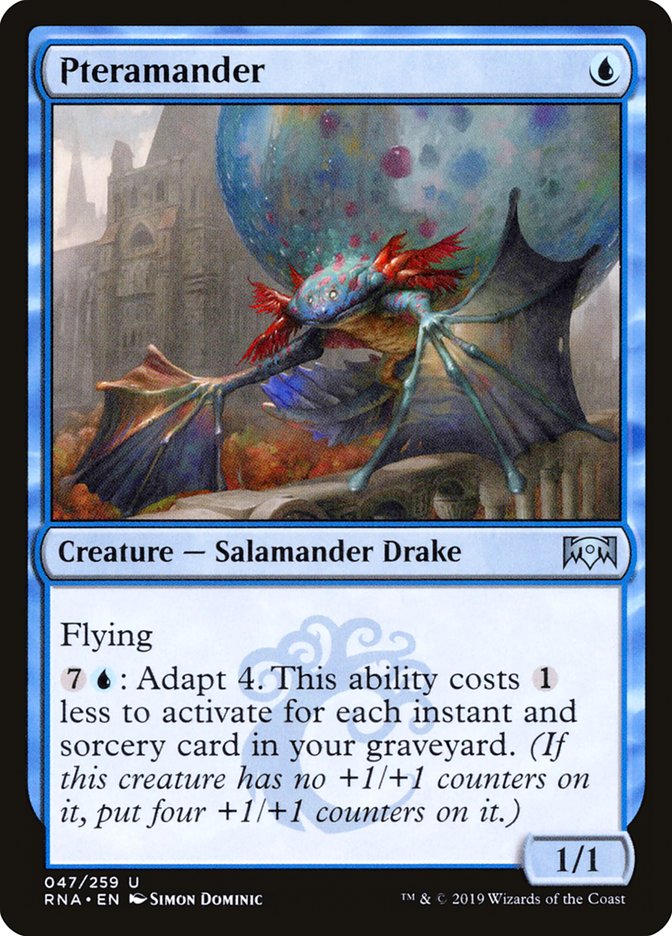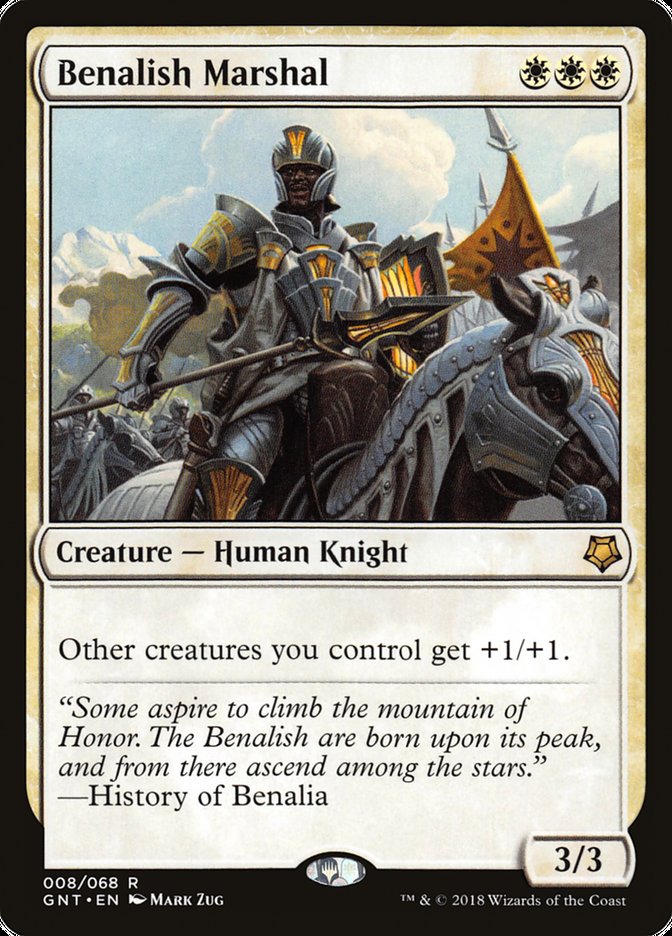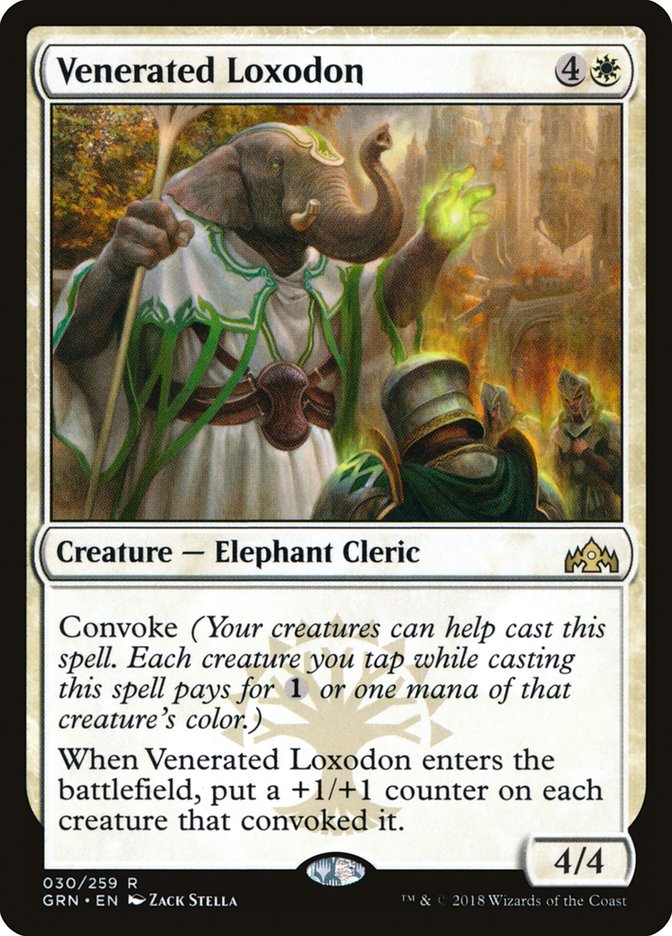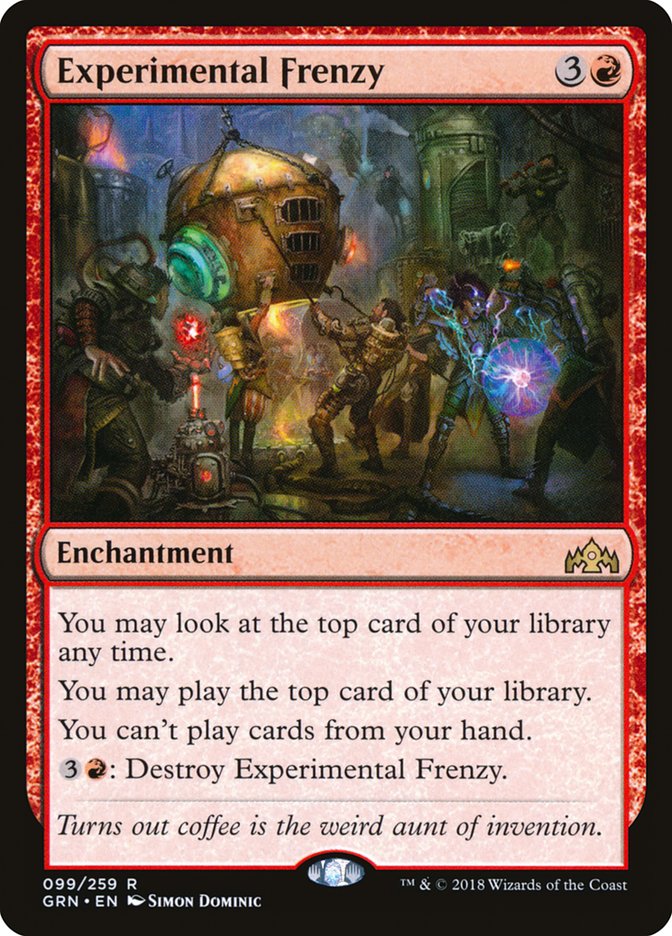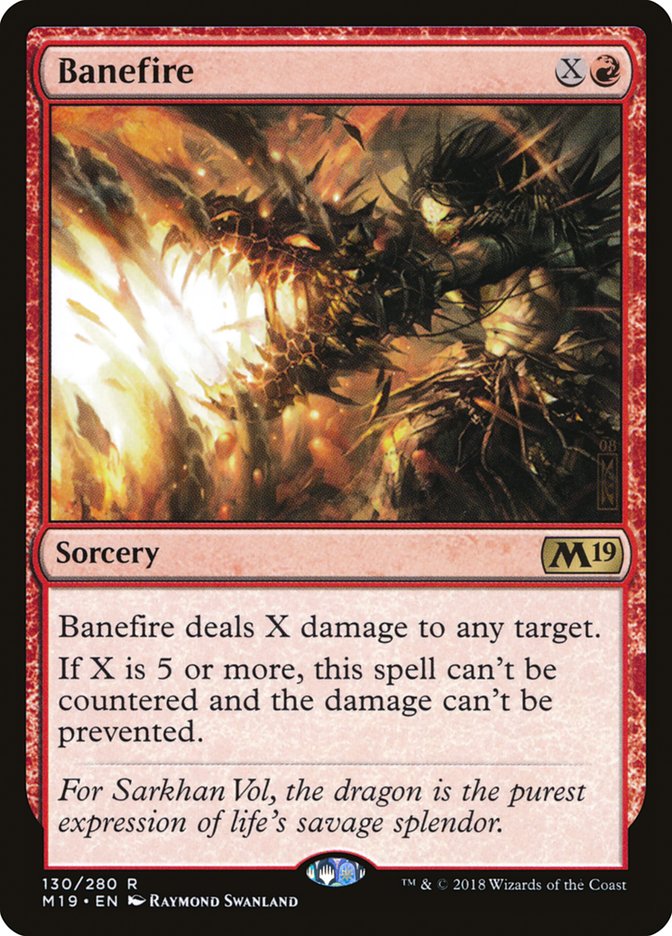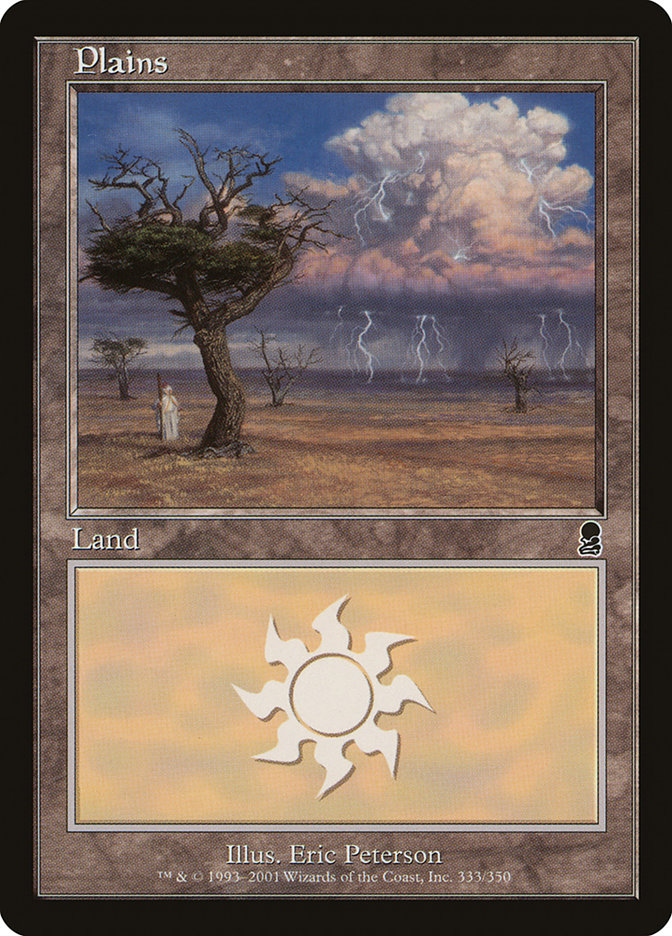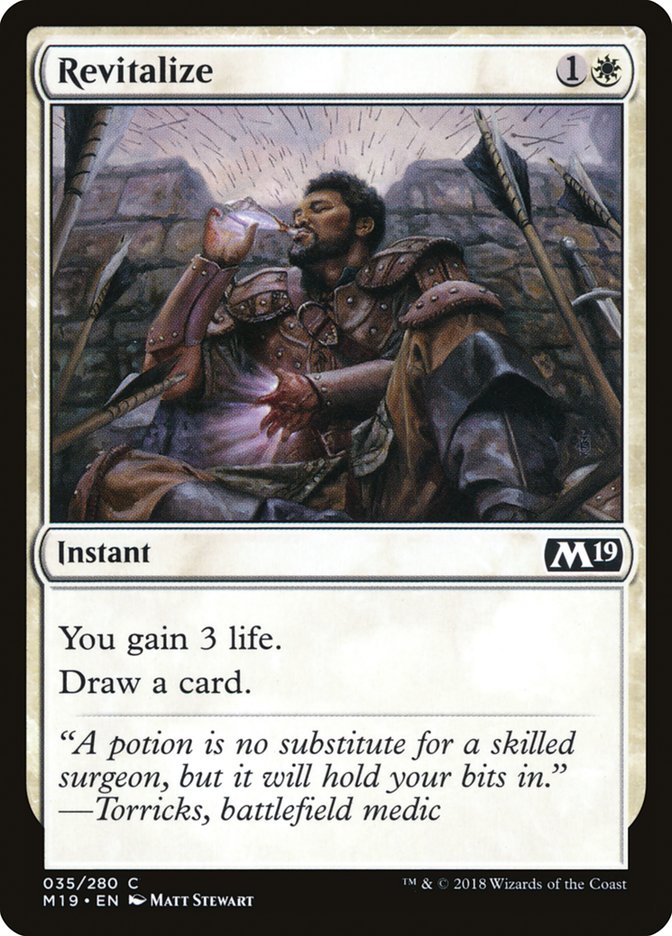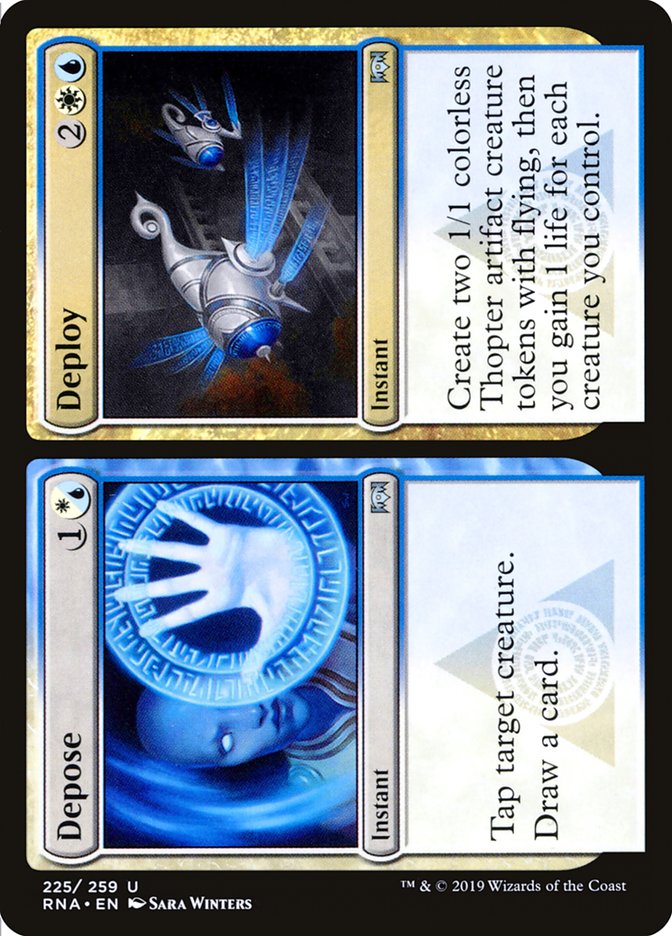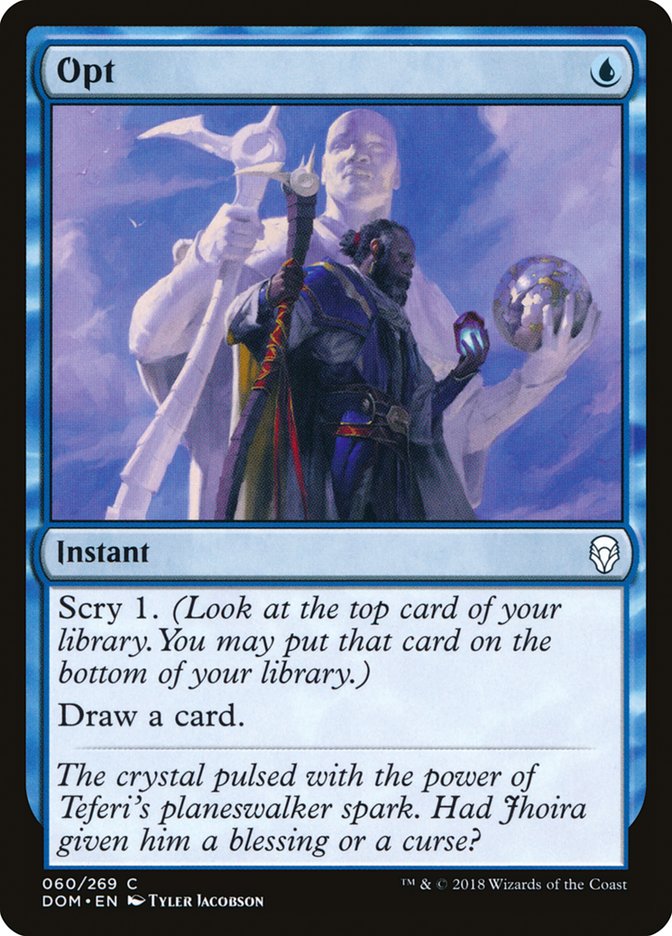Almost six months ago, I won a Pro Tour Qualifier for what is now Mythic Championship I in Cleveland, Ohio. Honestly, when I won that PTQ, I assumed I had qualified for Pro Tour Guilds of Ravnica last fall, only to find out my mistake weeks later when I went to book my travel and pulled the crumpled piece of paper with the info on it out of the bottom of my bag.
I could’ve taken that mildly embarrassing secret to my grave, but my integrity as a content producer in the awkward time leading up to major tournaments is just too important to me. You’re welcome, Magic community.
Anyway, at the time, I was thrilled to have another shot at the Pro Tour, having fallen off the train the previous year. Trying to build back my status from nothing was sure to be difficult, but I had learned a lot in the interim and had more fire after a reinvigorating first year with Team BCW, so I was ready for the challenge.
But the landscape of competitive and professional Magic has changed drastically in that time, first of all with the announcement of the Magic Pro League, the most drastic change to happen to competitive Magic since the introduction of the Pro Tour almost 25 years ago. With that change came an understanding that professional Magic, at least as run by Wizards of the Coast, is going to be a much more exclusive club than it has been in the past. We still don’t know exactly how organized play will be structured beyond the MPL, and with each passing day the road to the top looks steeper.
Second was the reintroduction of the Star City Games Players’ Championship. Having played in two of the previous three events, I know how great of a tournament it was to play in. In fact, one of the reasons I moved away from SCG Tour events and towards Grand Prix and Pro Tours is because its removal left the SCG Tour without a capstone achievement to chase. Finishing the year high on the leaderboard brought little more than a plaque and some byes. Making the PC an exclusive club, and seeing players wear their blue hoodies and jackets with pride since then, only added to the affirmation it gave.
With my commitment to Team BCW, I knew I’d be playing plenty of SCG Tour events, and the prospect of dual-queueing the two tournament series now that the former is even more difficult and the latter would bring with it many more people grinding for their chance at the Players’ Championship was daunting. I did that for a couple of years, traveling 40+ weekends out of 52 to both make the PC and hit Silver with the chance for Gold if I spiked a Pro Tour, and it was exhausting. Now I’m on the other side of 30 and am tired after two or three straight weekends on the road.
I’ve been joking for the last month or so that I’m not sure if I care more about the Mythic Championship or the Open next weekend in Syracuse. Of course I’d love to do well, and over the course of the year one Open isn’t nearly as impactful, but if I’m being realistic, it’s unlikely that this weekend leads anywhere significant.
This isn’t meant to be me taking a defeatist attitude, nor is it a clever double-bluff, since we all know the player who complains the most about how much they are going to lose always goes on to win the tournament. In fact, the end result is that I don’t feel any overbearing pressure to do well this weekend, like it’s my last best shot at something more. I’m happy with where I am in Magic, and win or lose come Sunday, that’s not going to change. I’ve come a long way from the person who wrote this article. Or this one. And while I think that emotional investment helped me to achieve what I have, I’m not prepared to sink that much of my mental health into a single tournament unless I know it’s part of something bigger.
With that said, let’s get into some strategy content. This weekend’s MC, like the Pro Tours that preceded it, is a mix of Draft and Constructed, this time Standard. Since no one cares about Limited Magic anymore except for Ben Stark and the two people that comment whenever someone brings up that no one cares, let’s skip that part.
I think I have developed a serious addiction to the ranked limited ladder. Mythic Cleveland is in 1 week and I’m playing Guilds of Ravnica, someone please help me.
— Ben Stark (@BenS_MTG) February 16, 2019
Standard. It’s a thing. It definitely exists, Descartes be damned. In a lot of ways, this Standard season has mirrored Guilds of Ravnica Standard. We started out thinking that red decks were great. We quickly found out they weren’t. Base Golgari decks took some time to tune, but quickly emerged as a top contender, largely dictating how the metagame evolved from then on.
The first challenger was the historically obvious answer to midrange: control. Teferi, Hero of Dominaria decks, splashing either red or black for appropriate removal, were popular, and the Golgari decks inbred to fight them and the mirror. This left a window for aggressive decks to dominate, building an early advantage and cementing it with either History of Benalia and Venerated Loxodon or Dive Down and Spell Pierce. The white decks have mostly changed their second color, while the blue ones have mostly dropped it entirely in favor of Tempest Djinn and scatological jokes on Twitter.
This season progressed more quickly than the last, since we had months of tuning with the first five guilds to build upon, but in broad strokes it’s proceeding similarly, with the one wrinkle being Nexus of Fate and Wilderness Reclamation decks looming in the background, waiting to ascend once the right build is found but continuing to gobble up sideboard space in nearly every deck.
From here I’m supposed to tell you what the next hot deck is, but honestly, I think we’re at the point where most things are known and the goal is to figure out which decks are real and which decks aren’t. From there it’s a matter of determining which of the viable decks have the biggest targets on them and which have the smallest, and err toward the latter.
When the Pro Tour happened early in a format’s development, most everyone was just trying to get through step one, and there was a lot more room for innovation, since lists were unrefined. But with the Mythic Championship coming relatively later, the margins are much smaller, which is unfortunately less exciting for coverage, but I think leads to higher-quality games, since you rarely get someone who brought a knife to a gun fight. With that said, here’s how I’d break down the best-known decks in Standard.
The Contenders
Creatures (24)
- 4 Llanowar Elves
- 1 Carnage Tyrant
- 2 Hostage Taker
- 4 Wildgrowth Walker
- 4 Merfolk Branchwalker
- 4 Jadelight Ranger
- 1 Ravenous Chupacabra
- 4 Hydroid Krasis
Planeswalkers (3)
Lands (25)
Spells (8)

If you told me I had to play all the remaining Standard tournaments this season with a single deck, I would choose one of these two. They have the highest combination of power and consistency in the format, and are proven winners even when being targeted. But being the best decks over a large sample has little weight for any individual tournament, where local factors can dominate. That said, I expect these to be the two most played decks in the tournament, as they were on Day 2 of Grand Prix Memphis.
When a format boils down to two top decks, often the deciding factor is which one is favored in the pseudo-mirror. In the abstract, Mono-Blue is ahead, since its tempo cards line up well against Sultai, the explore creatures have a tough time racing unless a Wildgrowth Walker gets going quickly, and Sultai doesn’t play a lot of cheap removal to interact with Curious Obsession on the early turns.
However, given that Mono-Blue is the more recent ascender to the top tier, it has the largest target on its back, and Sultai is better-positioned to adapt to improve their matchup against Mono-Blue than vice versa. As a would-be proponent of Mono-Blue, the scariest addition by far isn’t cheap removal like Cast Down, Moment of Craving, or Cry of the Carnarium. In fact, those cards are being trimmed to make room for an absolute monster in the matchup.
With creature-based removal like Ravenous Chupacabra and Hostage Taker, Dive Down or Siren Stormtamer is enough to gain a huge tempo advantage, since Mono-Blue can largely ignore the two-power bodies. But Kraul Harpooner is half as expensive and leaves behind a body that effectively trades with any of your early creatures, even when enchanted with Curious Obsession. At two mana it can break up the “nut draw” of one-drop + Obsession + protection spell, and even if you can power through it or counter it, it’s a great target for Find, which is typically a bad card in the matchup.
It even doubles as a removal spell for Tempest Djinn or an adapted Pteramander much of the time. It’s disgustingly good in the matchup and Sultai players have taken notice. The two lists in the Top 8 of the Grand Prix had a total of five copies in their sideboards.
I don’t know if it’s enough to swing the matchup entirely in Sultai’s favor, but having a solid Sultai matchup is the primary point in Mono-Blue’s favor, and even making that matchup close makes me much more reticent to play it this weekend.
From the Sultai side, the question becomes how much of your sideboard space you can afford to sacrifice to beat Mono-Blue. Midrange decks rely on improving post-sideboard across the spectrum, and there’s already a lot of space dedicated to beating Nexus and Control decks. Do you sacrifice there or against the other aggressive decks? Or maybe the mirror? These are tough decisions, and missing on them can derail your tournament.
The Overrated
Planeswalkers (4)
Lands (26)
Spells (30)
- 4 Absorb
- 3 Mortify
- 2 Negate
- 3 Vraska's Contempt
- 2 Search for Azcanta
- 2 Moment of Craving
- 1 Cast Down
- 3 Thought Erasure
- 2 Chemister's Insight
- 2 Precognitive Perception
- 2 Cry of the Carnarium
- 3 Kaya's Wrath
- 1 Warrant
Sideboard

It seems like every season a control deck emerges to beat the midrange decks. The midrange decks sideboard a pile of discard spells and counters and happily take their two-for-one, and then the control decks pack some sideboard creature that the midrange decks are unprepared for and flip the script, and eventually all the control deck’s tricks are exhausted and the midrange decks end up ahead.
Despite this movie being on a ten-year run, control players continue to say they’re ahead in the matchup. It’s always close and has a lot of play, since both players have to carefully marshal their resources while reading their opponent to avoid playing into their hands, so good control players I’m sure come out ahead, but at this point I’d rather be on the midrange side of things.
At that point, the strength of control should be in its aggressive matchup, with lots of cheap removal and sweepers. Hobbs even had two maindeck copies of Cry of the Carnarium to hammer small creatures.
But right now the best aggressive deck plays single, large threats and lots of counterspells, and while I’ve found the Esper / Mono-Blue matchup much closer than I first expected, it’s another place where Esper is looking for a big win and coming up short. To make matters worse, all this creature removal is a liability against Nexus of Fate decks.
Control decks put themselves in the same squeeze as midrange decks, trying to sideboard their way out of trouble because 60 cards isn’t enough to cover everything, but they aren’t as effective in doing so, since they need to sideboard the creatures that actually put pressure on their opponents, whereas midrange decks have them in the main. There’s always that glorious week or two where half the room isn’t aware of or prepared for those creatures, but once the jig is up, it’s time to move on.
Esper is a deck full of powerful cards, notably Teferi, Hero of Dominaria, so it can certainly win. That’s why it’s not in the Pretenders category. It’s not actively bad against anything, but it’s not actively good against anything either, so unless your name is Guillaume, Greg, or Shouta, I’d caution against this one.
The Pretenders
Creatures (12)
Lands (21)
Spells (27)

Creatures (18)
- 3 Fanatical Firebrand
- 4 Ghitu Lavarunner
- 4 Goblin Chainwhirler
- 4 Viashino Pyromancer
- 3 Runaway Steam-Kin
Lands (20)
- 20 Mountain
Spells (22)
- 3 Shock
- 3 Lightning Strike
- 4 Wizard's Lightning
- 4 Experimental Frenzy
- 4 Light Up the Stage
- 4 Skewer the Critics
Sideboard

I feel a little bad grouping these two decks together, since I think Izzet can at least feign viability, whereas Mono-Red is a steaming pile of garbage that only Patrick Sullivan and John Whetstone could ever love, but neither is good, so here we are.
Izzet is doing the same things as Mono-Blue, but worse. Izzet might be better at enabling adapt, but Pteramander is significantly better in Mono-Blue because it was lacking a heavy hitter past Tempest Djinn, whereas Izzet already had them. Also, with another set added to the format, every deck levels up in efficiency, so spinning your wheels with Chart a Course and Discovery comes at a higher cost than it did in the fall.
The red removal certainly helps it in the aggressive matchups, but hurts it against control and Nexus of Fate decks, so that’s a wash, and Kraul Harpooner may not be as good against Izzet as it is against Mono-Blue, but it’s still plenty good.
The one caveat I’ll put here is Niv-Mizzet, Parun. Protect it for one turn with a Dive Down and I don’t care what body is left around; Niv-Mizzet wins. So maybe there’s something to the Temur Drakes list that Jonathan Job has championed with so few Plaguecrafters and Ravenous Chupacabras around, but Kraul Harpooner is still killing it a lot of the time, and from there I think you’re losing the Hydroid Krasis mirror. You’re sacrificing percentage points in the Nexus matchups by cutting Enigma Drake, so Niv-Mizzet has to do a lot of work for it to be worthwhile.
I don’t think anyone is going to mistake me for someone who is unfairly biased against Izzet spell-based decks, but once you cut Faithless Looting, Manamorphose, and Thing in the Ice, the leftovers look tame.
On to the unglorified burn deck that we’re calling Mono-Red Aggro. It sucks. The slower decks all have plenty of lifegain and/or answers for Experimental Frenzy. Also, Duress and Negate went from marginal cards to actively good now that the creature count is down, so you aren’t getting much better in Games 2 and 3. Burn deck, meet Absorb, Wildgrowth Walker, and Duress. Good luck.
I get it. Goblin Chainwhirler kills one-toughness creatures. Mono-Blue and Mono-White Aggro play lots of one-toughness creatures. But you literally aren’t beating the white deck without an early Chainwhirler, and if they’re on the play, Benalish Marshal and Venerated Loxodon can beat you to the punch. If pressed, I’d still say that matchup is good for red if they’re maindecking three or four Chainwhirlers, but that’s not a given these days.
And as for Mono-Blue, in Magic’s history, a burn deck has never consistently beaten a tempo deck with good counterspells and a clock, except when they have an ace for the matchup like Eidolon of the Great Revel against Izzet Phoenix in Modern. It’s not even clear if Modern Burn is favored against Grixis Death’s Shadow, a deck that actively wants to deal itself ten or more damage per game and often can’t avoid at least five. That’s how good the combination of efficient creatures and cheap disruption is against burn spells.
Mono-Blue Aggro is a tempo deck. A Delver deck. Whatever you want to call it. It has cheap creatures and counterspells. Mono-Red Aggro plays a pile of three-mana burn spells and a single one-mana creature. There are some games where Runaway Steam-Kin can provide an overwhelming mana advantage, but for the most part the games end the same way: with the Mono-Blue player understanding the entire time that they will win the game at under five life and the Mono-Red player upset that they weren’t lucky enough to draw one more burn spell.
I’ll often describe matchups as either “close but not close” or “not close but close.” The first is one where the individual games are always close but the same deck comes out on top a huge portion of the time; the second is the opposite, where the matchup is a coin flip but most of the games are runaways. Burn against Tempo, barring any localized, mitigating factors, is an example of the first type. And no, Goblin Chainwhirler is not enough to turn things around. It doesn’t even kill a creature with Curious Obsession.
I spent ten minutes coming up with a good “500 Miles” joke to end this section before I bothered to Google the song and find out it’s by the Proclaimers and not the Pretenders. Let’s just move on. [Copy Editor’s Note: “2000 Miles” on…]
The Wild Cards
Creatures (26)
- 2 Adanto Vanguard
- 4 Skymarcher Aspirant
- 4 Snubhorn Sentry
- 4 Benalish Marshal
- 4 Dauntless Bodyguard
- 4 Venerated Loxodon
- 4 Tithe Taker
Lands (20)
- 20 Plains
Spells (14)

Creatures (2)
Lands (24)
Spells (34)

These are the two decks I don’t have very strong opinions on because I can’t quite figure them out, or at least get the point where I think I’ve figured them out.
What I do know is I desperately want the white aggro decks to be good. I’ve loved Venerated Loxodon and Conclave Tribunal ever since I read them and the synergy with History of Benalia is everything I’ve ever wanted it to be. I played Boros Aggro at the Season Two Invitational last year and was very happy with the deck and how powerful its cards were despite the low curve.
But ever since I picked up the deck post-Ravnica Allegianc,e I can’t seem to win. Jeskai Control was a great matchup, but Esper has removal that answers Adanto Vanguard, a sweeper that answers four-toughness creatures, and a removal spell that can also answer Conclave Tribunal and Legion’s Landing.
The sideboard splash of Experimental Frenzy and Banefire run afoul of Mortify and the increased lifegain in the control decks, and the new splash of counterspells takes away consistency, one of the deck’s major advantages. The red cards can sit in your hand for a while until you find the second color and still have a huge impact. Counterspells, especially Spell Pierce, have a few key spells they need to target, and once the spell is cast, they look embarrassing. Suffice it to say I’m not a fan of the blue cards. Twenty Plains, please.
Among the top decks, Mono-White is solid against Mono-Blue and weak to Sultai, so it mostly breaks even, but I expect Sultai to be the more popular of the two and I think the Mono-Blue matchup is a bit overstated, since Faerie Duelist and Entrancing Melody are both excellent out of the sideboard for the Island side, whereas Baffling End is merely okay for Plains.
As for Sultai, this is yet another example of the linear deck having one trick that the Sultai player knows is coming. If they want to beat Tocatli Honor Guard and Ajani, Adversary of Tyrants, they can. The only question is if enough of them want to this particular weekend.
With the increase in Kraul Harpooners has come a decrease in both Moment of Craving and Cry of the Carnarium. They have been some extra Cast Downs for Honor Guard, but they aren’t as well-prepared to stop your normal aggression, which is a big plus in white’s favor. I’m clinging to the hope that this is enough to make white-based aggro good, and our beloved Cedric Phillips put up an impressive 10-4-1 record as opposed to his usual 10-5 in Memphis while playing it, but I’m skeptical. Plus, I need to find five or six more Odyssey Thundercloud Plains by Friday, and SCG is out of stock as of the time I’m writing this. There were two when I checked a couple of days ago, so it looks like I have a new arch-nemesis.
Curse you, mysterious internet stranger!
As for Simic Nexus, I think it’s the best of that lot, which includes Bant Nexus, Temur Reclamation, and everyone with the necessary lack of shame to register a million Gates in their Constructed decks. I’ve been part of the group waiting for the right build to emerge a la Aetherworks Marvel, and it keeps doing well enough to stay around, but never taking that next jump into the upper echelon.
I didn’t start learning those decks, so I’ve largely ignored them in my MC testing for expediency, but if someone breaks it with Nexus of Fate, they’ll probably win the tournament. I’m crossing my fingers that it doesn’t happen though, since I’d get blindsided by it.
I like the push toward more cheap cantrips, which we saw with the addition of Revitalize and Depose in Bant lists, and now Simic lists are adopting Opt for the same reason. Opt seems to get no respect, but it’s a good card, and having lots of cheap spells lets Reclamation players utilize every bit of extra mana on Turns 3 through 5, which are the critical setup turns. You don’t need to bury your opponent on Turn 5 every game, and I think a lot of early lists fell into the trap of doing cool things rather than trying to build the most efficient engine.
Once things get going, Nexus of Fate and Search for Azcanta will take care of business, but it can be a slog getting there against aggression and disruption. Opt helps against both, and more of that cheap velocity is a good thing.
The second hole that Simic decks need to fill is a strong sideboard plan. The three-color variants have more options here by virtue of having more cards at their disposal, but the “ramp into Biogenic Ooze” plan we’ve seen recently strikes me as excellent. Biogenic Ooze comes down quickly, is effective against both aggro and control decks, dodges Negate and Duress, and goes nuts with Wilderness Reclamation. That’s all the boxes.
I’m slowly coming over to the idea that Nexus decks aren’t going to be busted, since it looks like they’ve come about as far as they can. They are strong, we must respect them, and, as much as I hate watching my Nexus opponent take ten turns while I think about the exact time I should concede, I like having non-traditional archetypes in Standard. It’s a great check on the format not getting too inbred toward expensive sorcery haymaker Magic, and in a few months it’ll be gone.
If you want to get a leg up on everything else, you can sacrifice your Nexus matchup to do so, but that’s another one of those risks that could derail your entire tournament, and in mixed format events, I’ve found that players tend to play it safe in each format, since they have the opportunity to compensate for a mediocre performance in one by crushing the other. Enough risk takers and the Todd Andersons of the world could crush, but I expect players to respect the deck this weekend.
There are some other fringe decks floating around, like Mardu Aristocrats or Rakdos Midrange, but these are the top dogs in the format – except for Mono-Red, which sucks. I’m still fretting over what exactly I expect the metagame to look like, but at this point I’m a strong favorite to register twenty or so basic lands, and they won’t be Mountains. Wish me luck!



